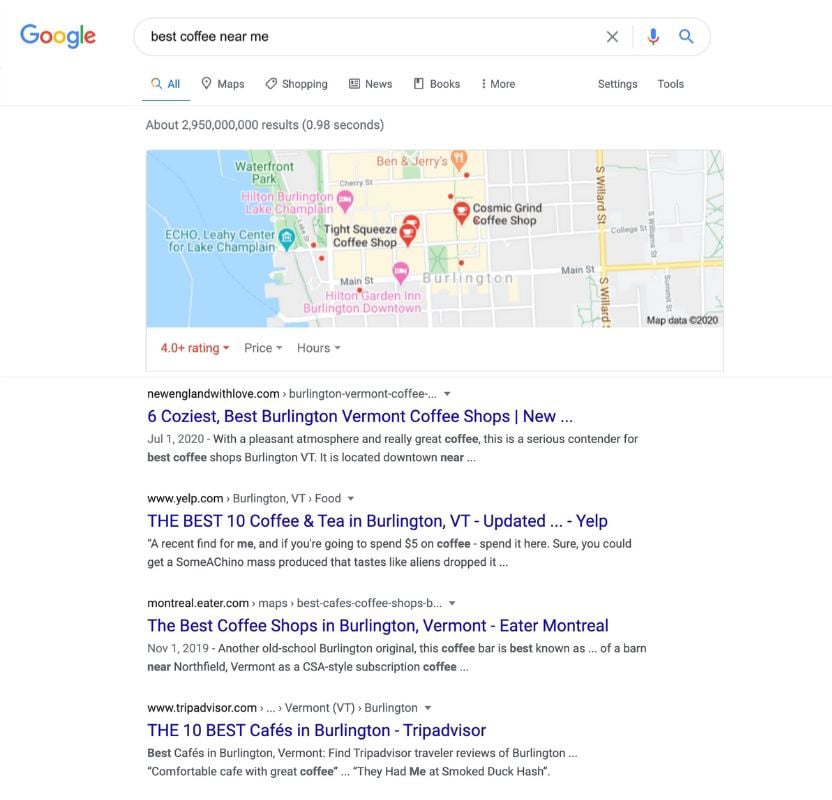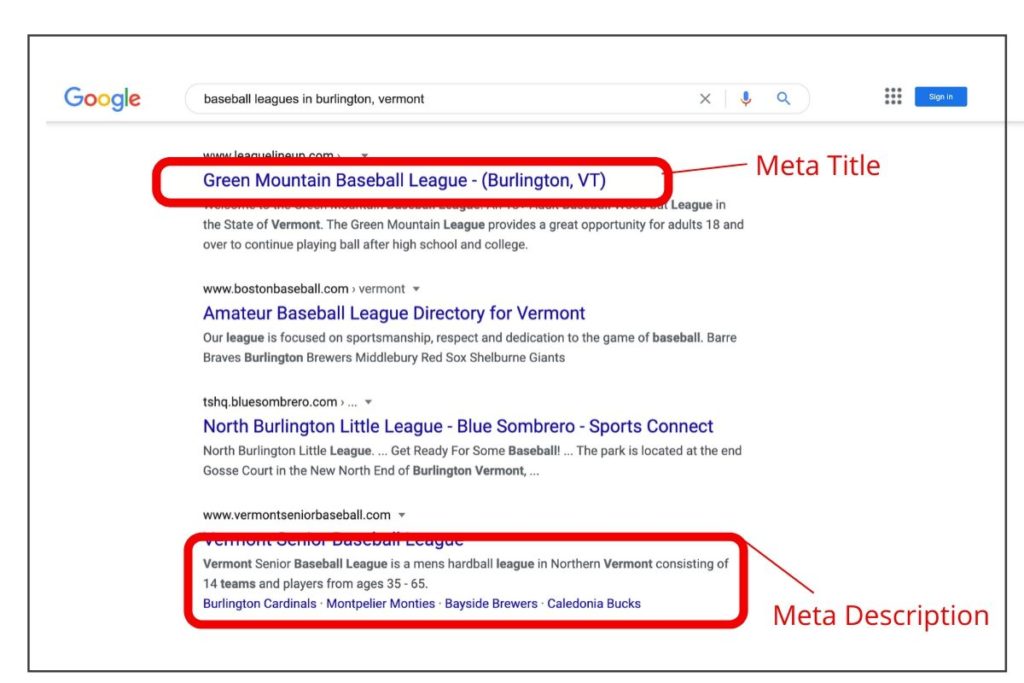


Let’s start with the basics: Search Engine Optimization (SEO) is a free method of improving your website’s Google Rankings. Why is it important for Google to rank your website high? Google is an extremely intelligent search engine platform that is constantly evaluating and ranking websites to determine results best suited for your search. For example, if I search “Best Coffee Near Me” Google chooses websites with the most relevant information to my search, as well as websites that are viewed often and well received by searches similar to mine.

So how can you get your website to rank high on relevant searches? This is where exercising proper SEO practices is essential. There are a number of things you can do to your website to enhance your Google ranking:

It’s important to note that while you may excel at one step of this process, in order to be ranked higher than competitors, it’s essential that you excel at every step. However, the focus today is On-site SEO.
In order to successfully incorporate relevant content throughout your website, the Research and Structure steps are the key to On-site SEO. Keyword Research is the process of determining words that are essential to include on the pages of your website in order to receive relevant and an abundant number of visitors. Learn more about how to properly conduct your keyword research here.
Once you have determined the keywords that are essential to incorporate throughout your website, it’s time to start writing your content. The number one rule of content is as follows:
Write for your audience, not for Google.
When digital marketing specialists first began optimizing websites with keywords, they did what is known as keyword stuffing, meaning their goal was to fit as many keywords onto their pages as possible. While the keywords called Google’s attention to the page, they were missing a key component: Google is equally if not more focused on whether or not your audience is satisfied with your page.
Google ranks pages high if visitors are finding the answers they are looking for there. One way Google can determine this is by your page’s bounce rate. A bounce rate is, “a metric that measures the percentage of people who land on your website and do completely nothing on the page they entered” (Yoast).

So think of it like this. If your page is filled with keywords, but makes little to no sense to the visitor, they are likely to leave in order to find the information they need elsewhere. Therefore, it is extremely important to incorporate your keywords in a way that is digestible to your reader. Your content should be engaging, informative, and answer to the questions that visitors came to your page looking for.
Okay, so now you’ve created content that both incorporates keywords and appeals to your page viewers. You’re all done, right? WRONG. Updating your content is essential and gives your website domain authority. Domain authority is how much of an authority your page has on a particular subject and is, therefore, a highly prioritized factor for Google upon ranking your website.

If you’ve ever gone to a website and noticed their latest blog post is dated several years back or the content seems outdated, my guess is you didn’t put much faith in that website and looked for your answers elsewhere. Keeping your content updated and posting new blog posts frequently shows both your visitors and Google that you remain actively engaged in your area of expertise.
Headings are important for a variety of reasons. First off, they provide a level of structure to your pages, making it simple for your readers to digest. Second, headings are essential for accessibility purposes. You can read more about the use of headings for accessibility purposes in the “Structure” section of this post. Lastly, Google is paying particular attention to keywords in your headings.
Like all content on your website, Google is searching for relevant keywords in your headings. That being said, adding keywords in your headings for the sake of adding them may not always pan out in your favor. As mentioned in the first point above, headings add a level of structure to your website, which ensures your content is more digestible to the readers. If it’s possible to add keywords in your header, we highly recommend you do. However, forcing keywords in headers where it doesn’t make sense results in poorly worded content, therefore, lower Google rankings.
For those who aren’t familiar, meta tags or metadata is the information on your website that appears on search engine result pages. While this information doesn’t appear on the web pages themselves, it is critical to success of your SEO. Google uses your metadata to understand additional information about the pages of your website.
Once again, the use of keywords in your meta tags while still remaining readable is very important. There are two parts to your meta tags, the meta title and the meta description. Below is an example of metadata that appears on a search engine results page.

Take a look at the verbiage used in the Google search bar. Google used a variety of factors to pull the most relevant results, including the page’s metadata. You’ll notice that many of the words used in my Google Search also match the verbiage used in the meta data. It’s important to write meta data that is relevant to your page and incorporates your keywords so when Google is looking for the best results, it can find your page easily.